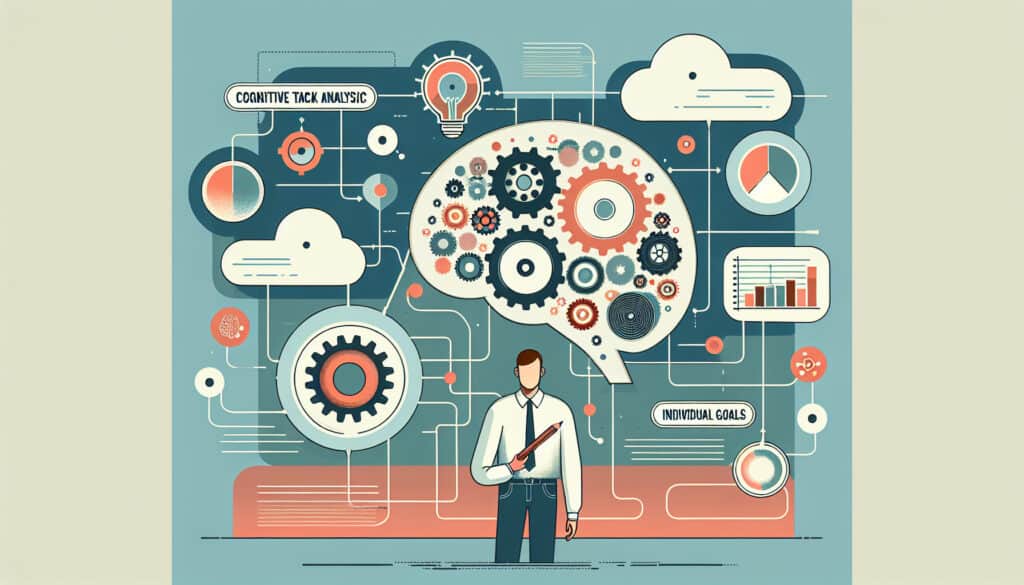A set of methods used to identify the mental processes, knowledge, and goals required to perform a task proficiently.
- المنهجيات: العملاء والتسويق, الاقتصاد
Cognitive Task Analysis

Cognitive Task Analysis
- الحوسبة الإدراكية, العوامل البشرية, التصميم المرتكز على الإنسان, التفاعل بين الإنسان والحاسوب, تمرين, سهولة الاستخدام, اختبار قابلية الاستخدام, تجربة المستخدم (UX), تصميم يركز على المستخدم
الهدف:
كيفية استخدامه:
- Researchers use interviews, observations, and structured techniques to elicit and represent the cognitive elements of expert performance, such as decision-making, problem-solving, and attention management.
الايجابيات
- Provides deep insights into the cognitive demands of complex tasks, is essential for designing effective training and user interfaces, and helps in developing expert systems.
سلبيات
- Is a highly intensive and time-consuming process, requires significant expertise in both the domain and the analysis methods, and is primarily focused on expert performance.
الفئات:
- الهندسة, بيئة العمل, الموارد البشرية, تصميم المنتج
الأفضل لـ
- Understanding the complex cognitive skills required for a task, typically to improve system design, training, or error analysis.
Cognitive Task Analysis (CTA) can be applied in various contexts, especially within industries that require high-stakes decision-making and skilled performance, such as aviation, healthcare, military operations, and complex system management. By utilizing structured techniques such as protocol analysis and cognitive walkthroughs, CTA facilitates thorough examinations of how experts perform tasks, shedding light on hidden cognitive processes that are often overlooked in traditional analyses. This methodology can be particularly beneficial during the system design phase, where the goal is to create user interfaces or training programs that align with natural human cognitive abilities, ensuring that they support users in high-pressure environments. Participants in a CTA may include domain experts, instructional designers, cognitive scientists, and software developers, collaborating to distill expert performance into actionable design requirements. The insights garnered can significantly enhance training curricula by aligning training practices with real-world cognitive demands, enabling learners to develop skills effectively and prevent errors that could lead to adverse outcomes. Applications of CTA also extend to developing expert systems and software that mimic human decision-making processes, thereby improving automation and system reliability in environments where human errors have critical repercussions. Such multidisciplinary engagement fosters a comprehensive understanding of task requirements, paving the way for innovations in both design and training methodologies.
الخطوات الرئيسية لهذه المنهجية
- Conduct semi-structured interviews with experts to explore their thought processes.
- Utilize think-aloud protocols where experts verbalize their thought processes during task execution.
- Observe experts in real-time while they perform the task to identify cognitive strategies.
- Use cognitive modeling techniques to represent the mental processes involved.
- Analyze the collected data to identify patterns in decision-making and problem-solving.
- Develop cognitive task inventories that outline necessary cognitive skills for the task.
- Validate findings with experts to ensure accuracy and relevance.
- Create visual representations, such as cognitive maps or flowcharts, to illustrate cognitive processes.
- Iterate on the analysis to refine and update the understanding of cognitive demands.
نصائح للمحترفين
- Implement collaborative sessions with experts to uncover tacit knowledge that might not surface in individual interviews.
- Use think-aloud protocols during observations to capture real-time decision-making and attention management strategies.
- Develop situational simulations that replicate task environments, allowing for analysis of cognitive responses under varying conditions.
لقراءة عدة منهجيات ومقارنتها, نوصي باستخدام
> مستودع المنهجيات الشامل <
مع أكثر من 400 منهجية أخرى.
نرحب بتعليقاتكم على هذه المنهجية أو المعلومات الإضافية على قسم التعليقات أدناه ↓، وكذلك أي أفكار أو روابط متعلقة بالهندسة.
السياق التاريخي
1986
(إذا كان التاريخ غير معروف أو غير ذي صلة، على سبيل المثال "ميكانيكا الموائع"، يتم تقديم تقدير تقريبي لظهوره الملحوظ)

منشورات ذات صلة
محاكاة مونت كارلو
الاختبار المستند إلى النموذج
التحقق من النموذج
بحوث الأساليب المختلطة
تدقيق الأخطاء (بوكا يوك)
اختبار الملف الشخصي للمهمة